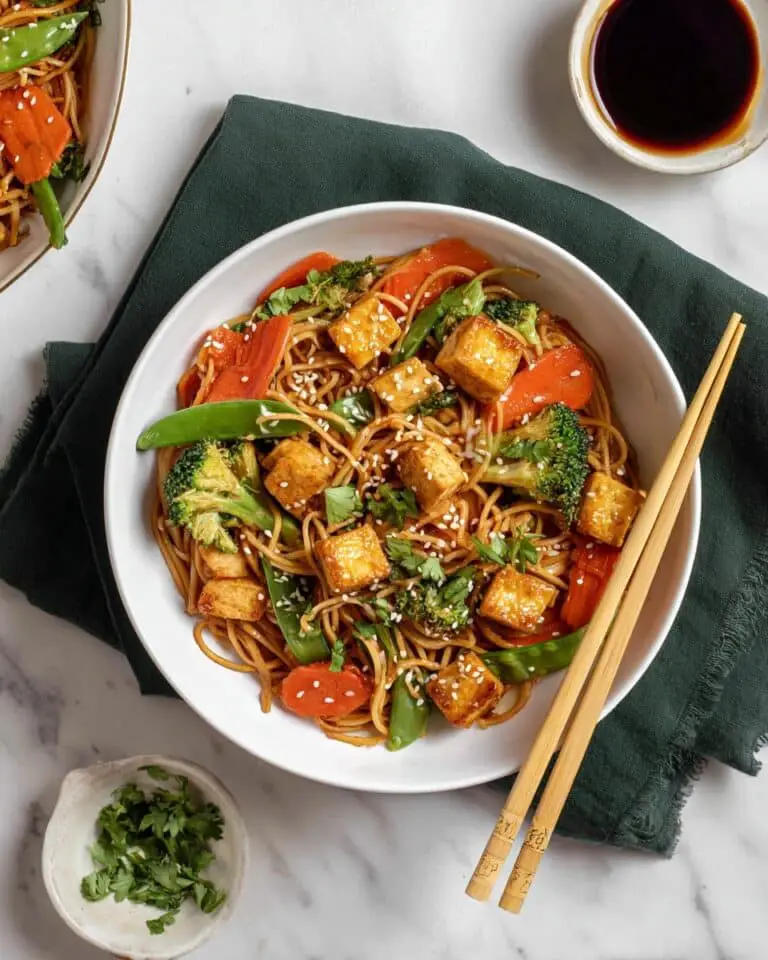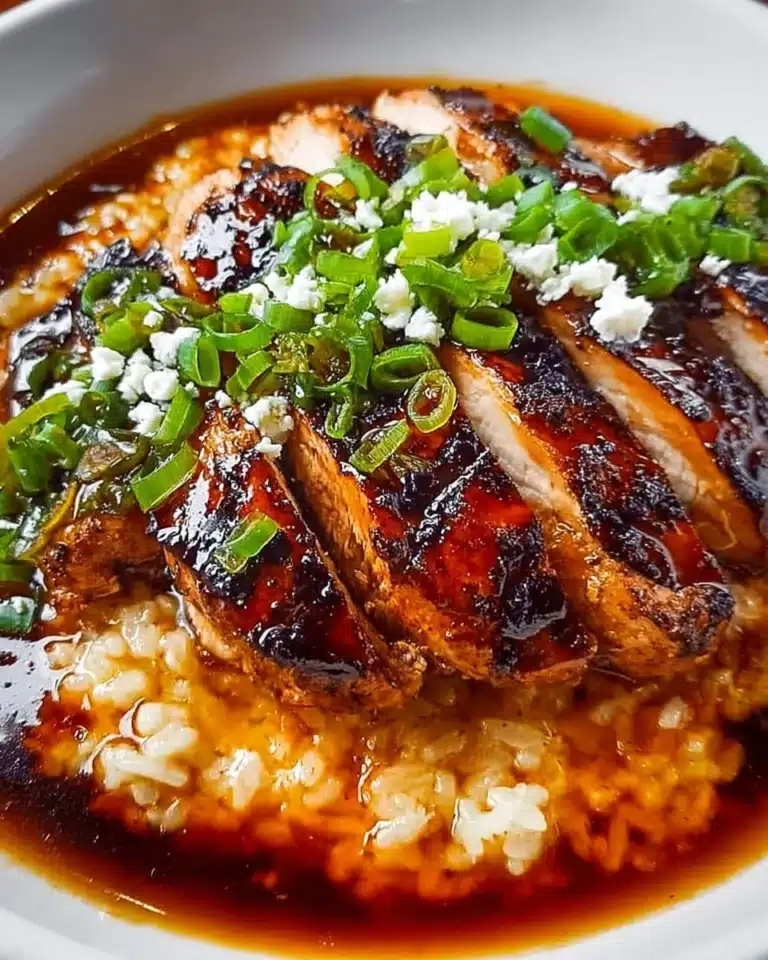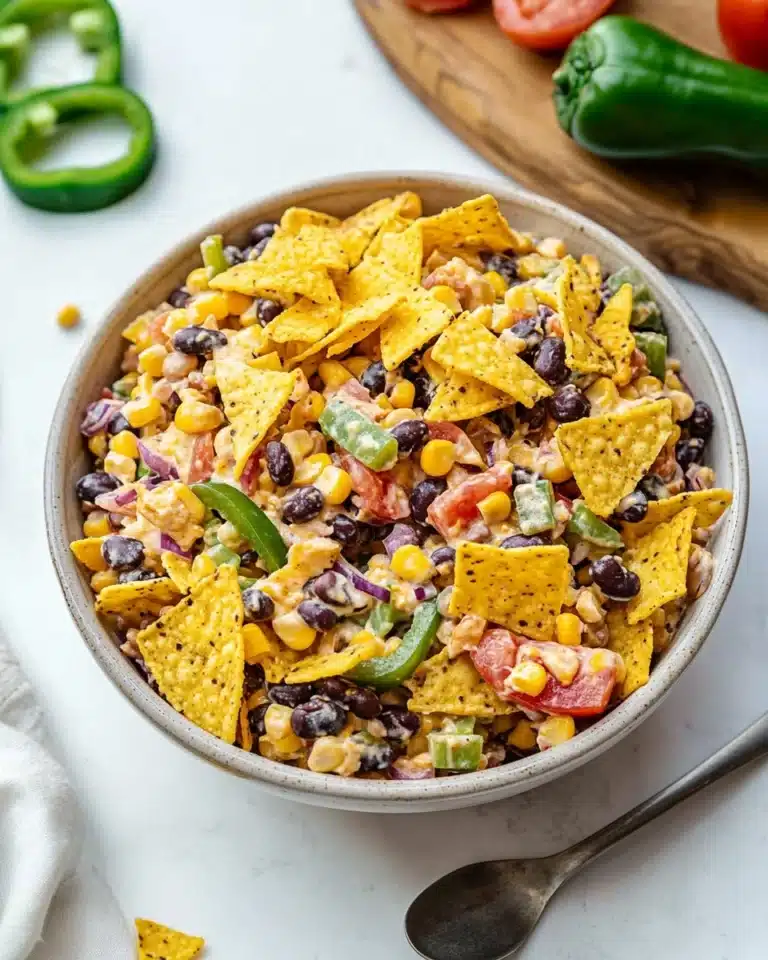If you’ve ever craved the irresistibly delicious taste of Panda Express Chow Mein but wanted to whip it up in your own kitchen without the wait or the takeout price, you’re in for a treat. This Easy 15-Minute Panda Express Chow Mein Recipe combines chewy noodles with crunchy cabbage, celery, and onions all tossed in a savory, fragrant sauce that’s stirred to perfection in one pan. It’s quick, simple, and bursting with flavor, making it the perfect side dish or even a main event when you want something comforting and satisfying fast.
Ingredients You’ll Need

The beauty of this recipe lies in its simplicity and how each ingredient shines to create that classic chow mein experience. Every element is essential—from the fresh noodles to the mix of vegetables, all coated in a savory sauce that brings everything together with a glorious depth of flavor.
- 1 lb fresh chow mein noodles: These chewy noodles are the heart of the dish and provide that signature texture you crave.
- 2 cups thinly sliced cabbage: Adds a satisfying crunch and mild sweetness.
- 1 cup sliced celery: Brings a fresh, crisp bite that balances the softness of the noodles.
- 1 small sliced onion: Gives aromatic depth and a hint of caramelized flavor when cooked.
- 2 tablespoons vegetable oil: Or any neutral oil, perfect for stir-frying without overpowering the veggies.
- 2 tablespoons regular soy sauce: The savory backbone of the sauce for authentic umami taste.
- ½ tablespoon dark soy sauce: Adds color and a subtle, richer soy flavor.
- 2 tablespoons oyster sauce or vegetarian stir fry sauce: Boosts savoriness with a hint of sweetness and complexity.
- 1 tablespoon sesame oil: Provides a fragrant, nutty aroma that’s unmistakably delicious.
- 2 minced garlic cloves: Infuses the sauce with a punch of flavor and warmth.
- ¼ cup low-sodium chicken stock or cold water: Used to blend the sauce ingredients creating the perfect consistency.
- ½ tablespoon cornstarch or potato starch: Thickens the sauce to beautifully coat the noodles and veggies.
How to Make Easy 15-Minute Panda Express Chow Mein Recipe
Step 1: Prepare the Noodle Sauce
Start by mixing all your sauce ingredients in a small bowl. This includes regular soy sauce, dark soy sauce, oyster sauce, sesame oil, minced garlic, chicken stock, and cornstarch. Setting this aside allows the flavors to meld and ensures an instant burst of taste when tossed with the noodles. This simple step makes all the difference.
Step 2: Blanch the Chow Mein Noodles
Bring a large pan of water to a boil and gently drop in the fresh chow mein noodles. Blanch them for just 20-30 seconds—enough to loosen the noodles but not so long that they become mushy. Once cooked, drain them in a colander without rinsing; keeping the slight starchiness helps the sauce cling to the noodles better later.
Step 3: Stir-Fry the Vegetables
Heat 1 tablespoon of vegetable oil in a spacious pan over medium-high heat. Toss in the sliced onions, cabbage, and celery, cooking them just until tender, about a minute. This quick stir-fry keeps the veggies vibrant, crunchy, and full of fresh flavor, which contrasts beautifully with the tender noodles.
Step 4: Combine and Toss Everything Together
Push the cooked vegetables to one side of the pan and add the remaining tablespoon of oil to the empty space. Add the blanched noodles and pour the prepared sauce over them. With a spatula or tongs, toss everything gently but thoroughly, ensuring the noodles and vegetables are evenly coated with that savory sauce. Once the sauce thickens and glazes the chow mein, take it off the heat. Your Easy 15-Minute Panda Express Chow Mein Recipe is now ready to enjoy!
How to Serve Easy 15-Minute Panda Express Chow Mein Recipe
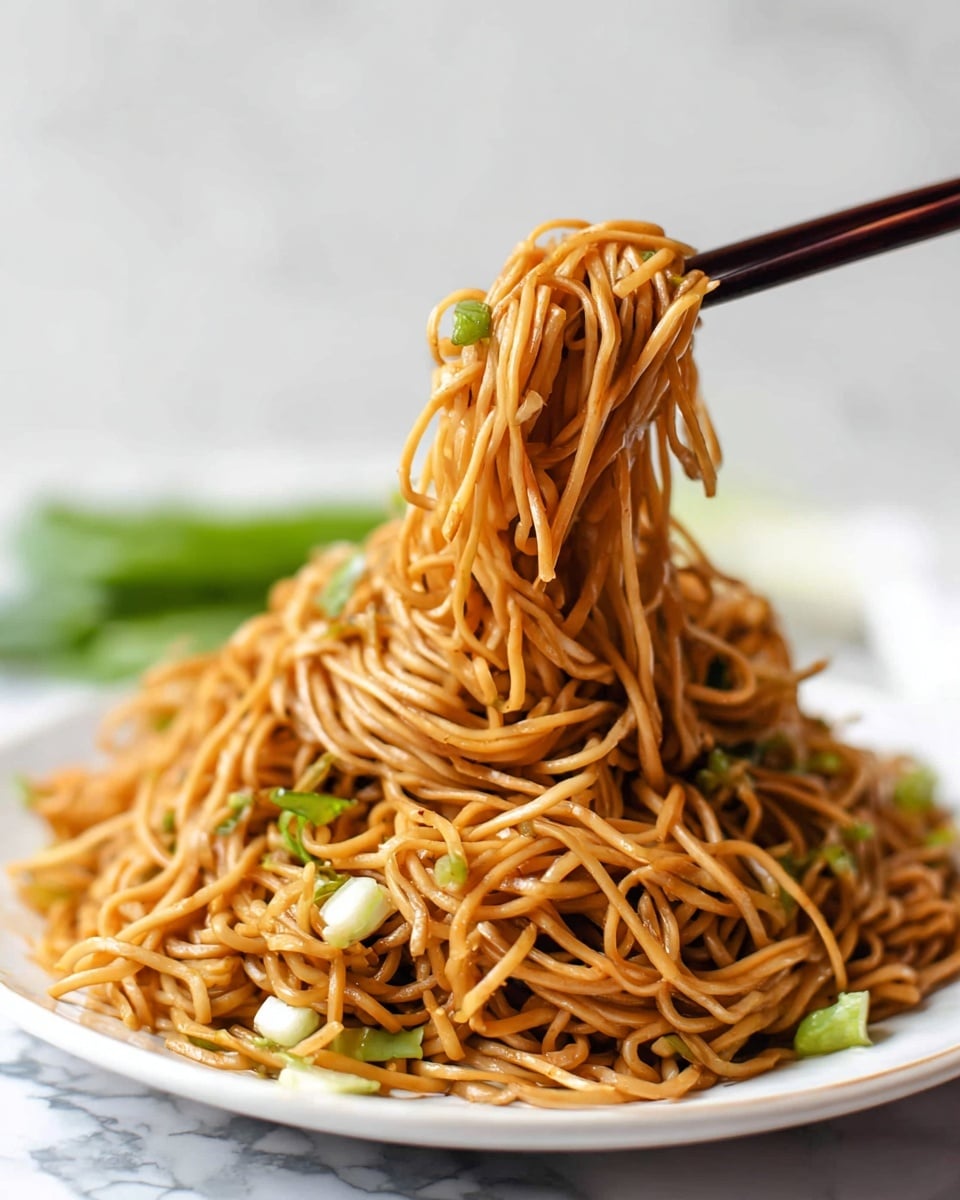
Garnishes
To add an extra layer of flavor and texture, sprinkle some toasted sesame seeds or chopped green onions on top right before serving. These garnishes add a lovely crunch and fresh pop of color that elevates the dish visually and taste-wise.
Side Dishes
This chow mein shines as a fantastic side to almost any Asian-inspired main course. Pair it with crispy orange chicken, sweet and sour pork, or even a light vegetable stir-fry for a balanced and satisfying meal. The noodle dish is filling yet versatile enough to complement spicier or saucier mains.
Creative Ways to Present
For a fun twist, serve the chow mein in lettuce cups for handheld bites or layer it as a base in a bowl topped with grilled tofu or shrimp. You can also add a drizzle of chili oil or sprinkle some crushed peanuts for extra zing. Serving this dish in vibrant bowls with chopsticks or bamboo steamers adds to the authentic vibe that will impress your friends and family.
Make Ahead and Storage
Storing Leftovers
Leftover chow mein stores very well in an airtight container in the refrigerator for up to 3 days. Keep the noodles slightly undercooked if you plan to store them ahead, as they will soften more when reheated.
Freezing
Freezing chow mein is possible but not ideal for best texture. If you freeze, do so in a tightly sealed container and consume within 1 month. Thaw overnight in the fridge before reheating gently to prevent sogginess.
Reheating
To reheat, gently warm the chow mein in a skillet over medium heat with a splash of water or a bit more sesame oil to restore moisture and keep the noodles from drying out. Stir frequently until heated through and saucy again.
FAQs
Can I use dried chow mein noodles instead of fresh?
Yes, but dried noodles require boiling longer to soften. Be sure to follow package instructions and avoid overcooking so they can withstand the stir-fry without falling apart. Fresh noodles are preferred for the best texture in this recipe.
Is there a vegetarian or vegan version of this recipe?
Absolutely! Simply swap the chicken stock for vegetable broth and use vegetarian oyster sauce or mushroom stir-fry sauce instead. This keeps all the umami-packed flavor intact without any animal products.
What other vegetables work well in this chow mein?
Feel free to toss in snap peas, bell peppers, or shredded carrots for extra color and crunch. Just stir-fry them briefly along with the cabbage, celery, and onions for the best texture.
Can I add protein to this chow mein?
Definitely! Cooked chicken, beef strips, tofu, or shrimp can be added either during the vegetable stir-fry stage or mixed in with the noodles and sauce to make it a more complete meal.
Why shouldn’t I rinse the noodles after blanching?
Not rinsing helps retain a bit of the natural starch on the noodles, which allows the sauce to cling better and results in a more flavorful final dish. Rinsing washes away that starch and makes the noodles slippery.
Final Thoughts
There’s nothing quite like the warm, comforting flavors of Panda Express Chow Mein made fresh at home, especially when it comes together so quickly. This Easy 15-Minute Panda Express Chow Mein Recipe is a trusty go-to when you want a speedy, delicious dish that tastes like a restaurant favorite without the hassle. Once you try it, you’ll keep coming back for that perfect balance of tender noodles, crunchy veggies, and savory sauce. Trust me, it’s a game changer in your weeknight meal lineup!
Print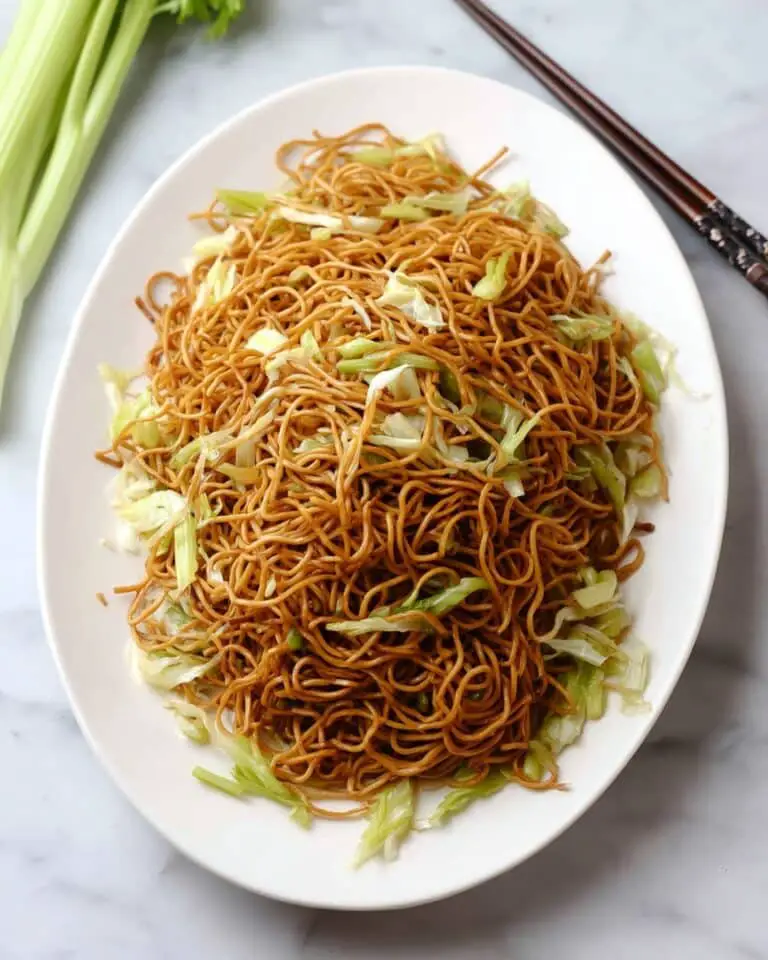
Easy 15-Minute Panda Express Chow Mein Recipe
Enjoy a quick and delicious homemade version of Panda Express Chow Mein with chewy noodles, crunchy cabbage, celery, and onions stir fried in a savory sauce. This easy 15-minute recipe is perfect as a side dish or a budget-friendly alternative to takeout, made with simple ingredients and cooked all in one pan.
- Total Time: 15 minutes
- Yield: 4 servings
Ingredients
Vegetables and Noodles
- 1 lb fresh chow mein noodles
- 2 cups cabbage, thinly sliced
- 1 cup celery, sliced
- 1 small onion, sliced
- 2 tablespoons vegetable oil (or any neutral oil)
Noodle Sauce
- 2 tablespoons regular soy sauce
- ½ tablespoon dark soy sauce
- 2 tablespoons oyster sauce (or vegetarian stir-fry sauce)
- 1 tablespoon sesame oil
- 2 garlic cloves, minced
- ¼ cup low-sodium chicken stock (or cold water)
- ½ tablespoon cornstarch (or potato starch)
Instructions
- Prepare the noodle sauce: In a small bowl, thoroughly combine all the noodle sauce ingredients—regular soy sauce, dark soy sauce, oyster sauce, sesame oil, minced garlic, chicken stock, and cornstarch. Set this sauce mixture aside to let the flavors meld.
- Blanch the noodles: Bring a large pan filled halfway with water to a boil over medium-high heat. Add the fresh chow mein noodles and blanch them for 20 to 30 seconds until they loosen but are still tender. Then strain the noodles in a colander without rinsing to retain their texture and starch for better sauce adherence.
- Sauté the vegetables: Heat 1 tablespoon (15 ml) of vegetable oil in a large pan or wok over medium-high heat. Add the sliced onions, cabbage, and celery, and stir fry until softened, about 1 minute. This quick sauté helps maintain a slight crunch in the vegetables.
- Add noodles and sauce: Push the cooked vegetables to one side of the pan, then add the remaining 1 tablespoon of vegetable oil in the empty space. Add the blanched noodles along with the prepared noodle sauce all at once.
- Toss and combine: Gently toss the noodles, vegetables, and sauce together until the noodles are thoroughly coated with the savory sauce and everything is heated through evenly. Remove from heat promptly to avoid overcooking, and serve hot.
Notes
- Do not rinse the noodles after blanching, as the starch helps the sauce adhere better.
- For a vegetarian version, replace oyster sauce with vegetarian stir-fry sauce.
- Be careful not to overcook the noodles; a quick blanch keeps them chewy.
- You can add cooked protein like chicken or shrimp for a complete meal.
- Adjust the soy sauce to taste if you prefer a saltier or milder flavor.
- Prep Time: 10 minutes
- Cook Time: 5 minutes
- Category: Side Dish
- Method: Stovetop
- Cuisine: Chinese


